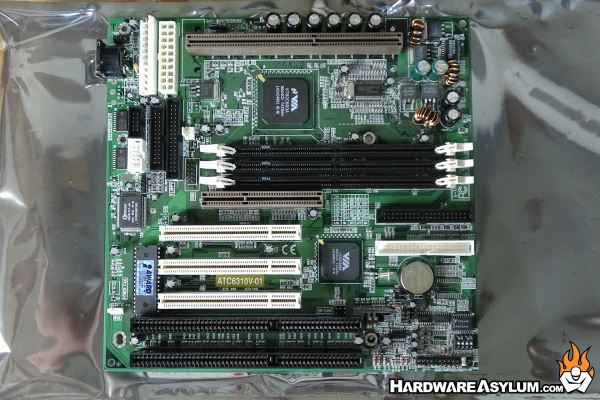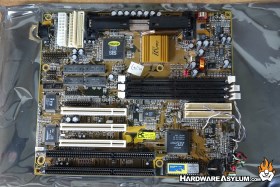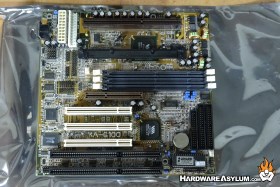Slot 1 Motherboard Testing for a Retro PC Build
Author: Dennis GarciaIntroduction
During the lockdown and in the midst of the global chip shortage I started on a Retro PC adventure. I say adventure but really it was “revisiting” old systems I used in the past, in a slightly different way. One of the systems I wanted to put together was a Pentium 2 as that generation holds a special place for me in my PC Hardware journey.
You see, when I first started building computers one of the first rigs, I put together was a 386SX @ 16Mhz. This system was extremely slow but, got me started with a case, PSU, 540MB hard drive, and some memory. That build also marked the beginning of a non-stop upgrade that included two 486 builds and a two socket 7 Pentium rigs. These were all done on a budget that typically consisted of me selling old hardware to partially fund the new gear.
The build that stopped this cycle was my first Pentium II 333Mhz sitting atop a Tyan S1846 Tsunami. This build marked the transition from Baby AT to ATX Proper and required that I buy all new components for just about everything in the computer. And, believe it or not, I still have that motherboard today with the same processor attached.
Despite having put together a number of AT style systems I never got to explore the hardware the way I do with modern machines. In some ways these older computers paved the way and defined the trends we have all accepted while proving that change is good.
For those of you who have been following my YouTube build series I have put together three systems (as of this article)

- The Classic Case Build: High-End 386DX 40Mhz, 16MB RAM and Microscience 40MB RLL Hard Drive
- The Scamcase Build: Pentium 133Mhz, 32MB RAM and Voodoo 2
- The Primo Build: Pentium 2 500Mhz, 786MB RAM and Voodoo 2
The first two systems were easy to assemble since I had only single versions of the hardware I wanted to use. However, with the Pentium 2 build I had a little more trouble sourcing a motherboard and what boards I could find, turned out to be garbage. This is likely why they were up for sale to begin with.
First was a PcChips M747: This is your basic Pentium II motherboard designed for OEM systems and not really intended for enthusiasts. Ultimately, I picked up two of these boards, the first was picked up at the RePC in Seattle from their discounted motherboard bin. I got it for a good price, mostly because it didn’t come with any accessories. As it turned out, the board was DOA (or appeared to be DOA) so it was set aside.
The second board I picked up off ebay and I was luck enough to get a complete board with the accessory cables, processor and a stick of memory.
The next was the FIC KA-6100: I had high hopes for this motherboard, it was purchased with a full compliment of accessory cables, the famed 300A Celeron processor and a reprinted manual. Sadly, the board turned out to be complete garbage not wanting to run any additional processors and a chipset bug that rendered the AGP slot to be unstable. Strangely enough it worked perfectly provided that you only used Windows 95 and any hardware available before the board was released. I feel this was 100% due to poor BIOS support and, considering that AT systems were on their way out, it is easy to see why.
Board three and four are pretty similar and from A-Trend. ATC-6310 and ATC-6230: These two boards are very similar in layout and features. The ATC-6310 features a VIA chipset while the ATC-6230 is using the Intel 440BX.

I really liked both of these boards and they each had their own quirks. Both were excellent overclockers by allowing a variety of frequencies to choose from. The section was based on which processor was installed and both boards would auto detect the CPU for applying the voltage settings.

The Intel 440BX would support Coppermine and 133Mhz CPUs but would overclock the AGP and PCI bus frequencies. It also only supported ATA33 hard drive transfer speeds. The VIA version has native support for 133Mhz CPUs but wouldn’t support the Coppermine but offered an upgraded ATA66 hard drive controller.



